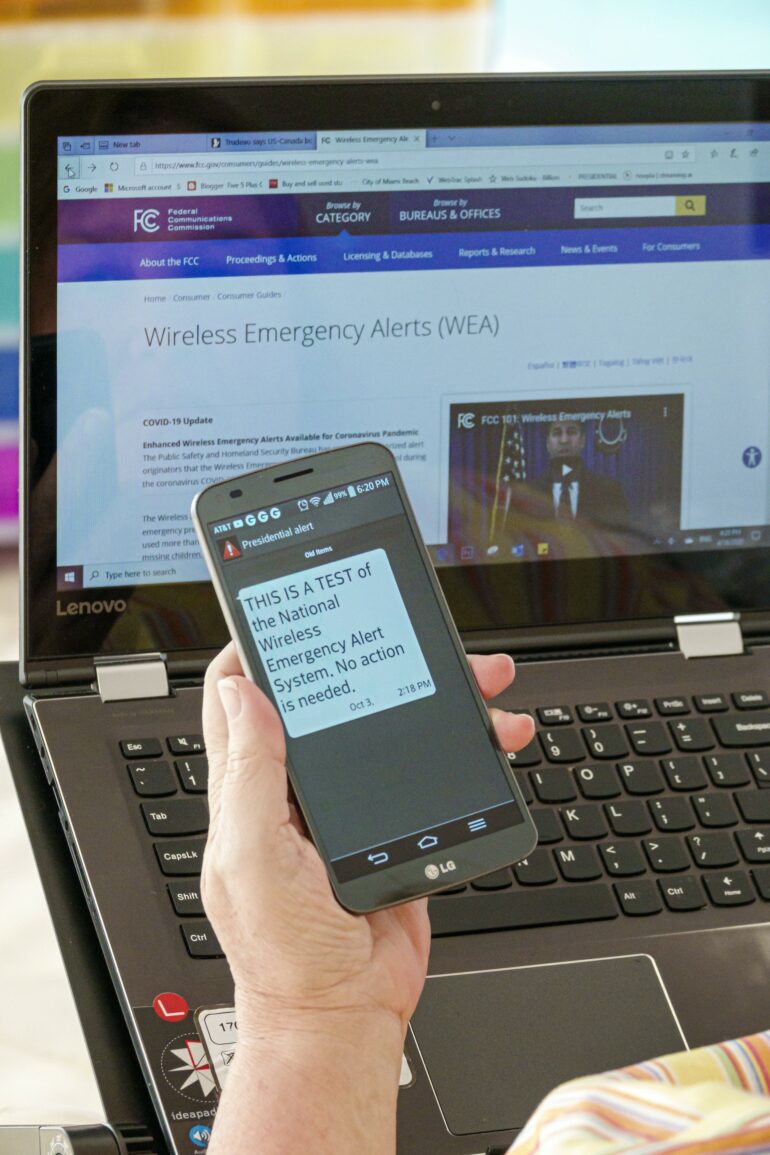The Wireless Emergency Alert system is scheduled to have its third nationwide test on Oct. 4, 2023. The Wireless Emergency Alert system is a public safety system that allows authorities to alert people via their mobile devices of dangerous weather, missing children and other situations requiring public attention.
Similar tests in 2018 and 2021 caused a degree of public confusion and resistance. In addition, there was confusion around the first test of the U.K. system in April 2023, and an outcry surrounding accidental alert messages such as those sent in Hawaii in January 2018 and in Florida in April 2023.
The federal government lists five types of emergency alerts: National (formerly labeled Presidential), Imminent Threat, Public Safety, America’s Missing: Broadcast Emergency Response (Amber), and Opt-in Test Messages. You can opt out of any except National Alerts, which are reserved for national emergencies. The Oct. 4 test is a National Alert.
We are a media studies researcher and a communications researcher who study emergency alert systems. We believe that concerns about previous tests raise two questions: Is public trust in emergency alerting eroding? And how might the upcoming test rebuild it?
Confusion and resistance
In an ever-updating digital media environment, emergency alerts appear as part of a constant stream of updates, buzzes, reminders and notifications on people’s smartphones. Over-alerting is a common fear in emergency management circles because it can lead people to ignore alerts and not take needed action. The sheer volume of different updates can be similarly overwhelming, burying emergency alerts in countless other messages. Many people have even opted out of alerts when possible, rummaging through settings and toggling off every alert they can find.
Even when people receive alerts, however, there is potential for confusion and rejection. All forms of emergency alerts rely on the recipients’ trust in the people or organization responsible for the alert. But it’s not always clear who the sender is. As one emergency manager explained to one of us regarding alerts used during COVID-19: “People were more confused because they got so many different notifications, especially when they don’t say who they’re from.”
When the origin of an alert is unclear, or the recipient perceives it to have a political bias counter to their own views, people may become confused or resistant to the message. Prior tests and use of the Wireless Emergency Alert system have indicated strong anti-authority attitudes, particularly following the much-derided 2018 test of what was then called the Presidential Alert message class. There are already conspiracy theories online about the upcoming test.
People receive mobile alerts from then-president Donald Trump in a ‘Saturday Night Live’ sketch aired on Oct. 6, 2018.
Trust in alerts is further reduced…



